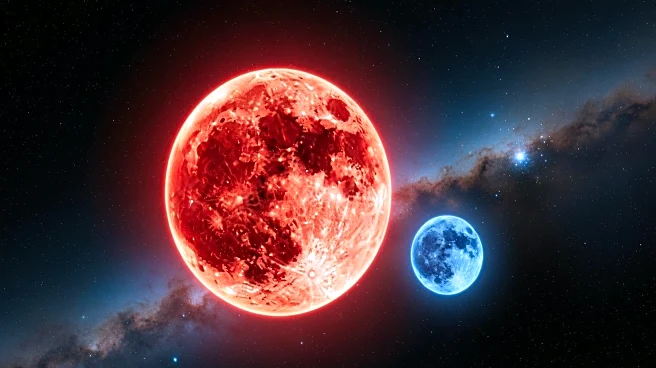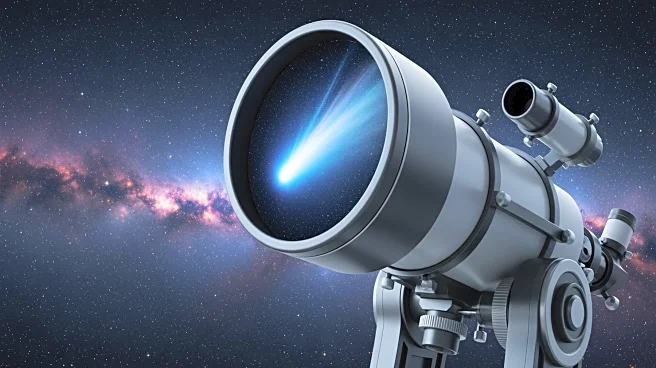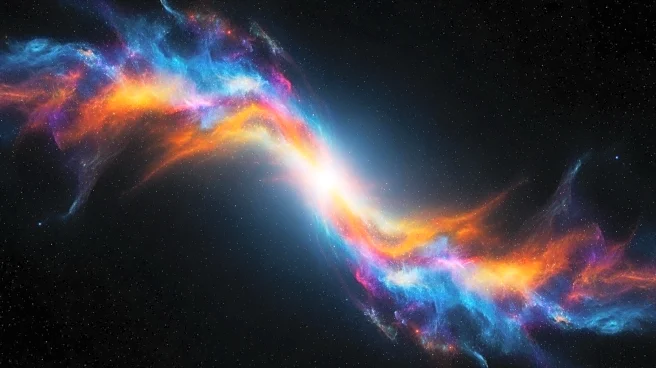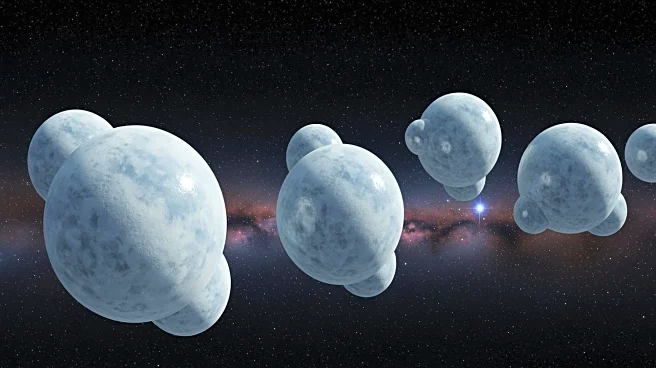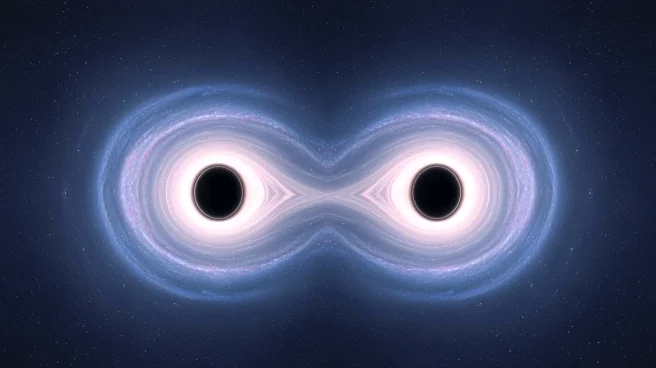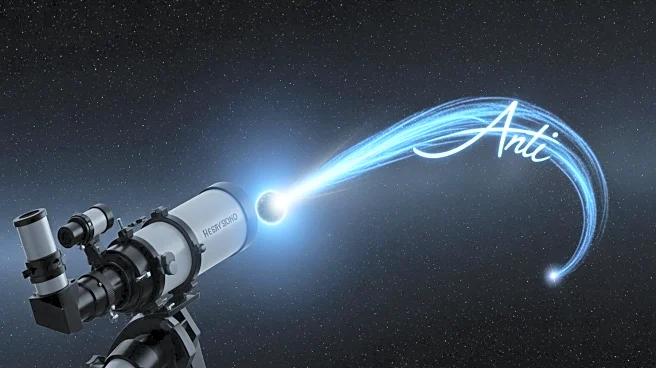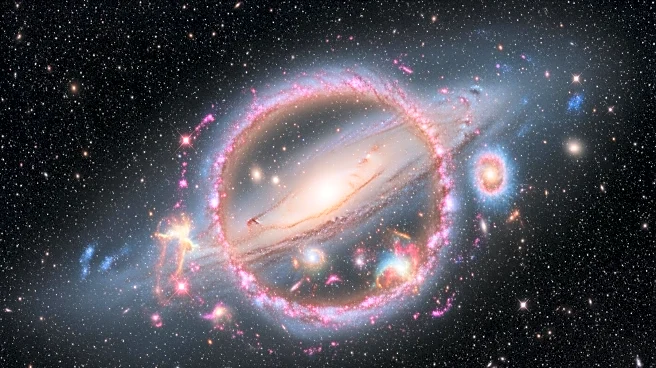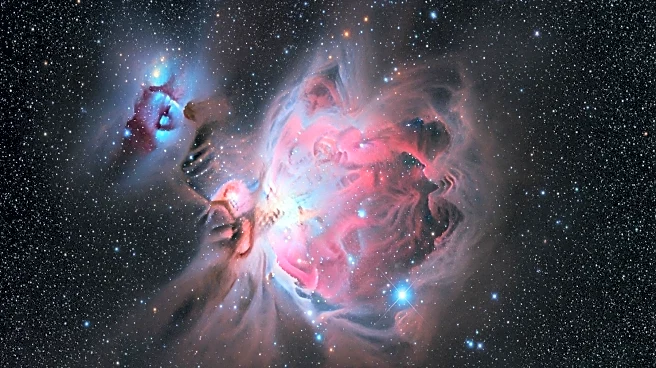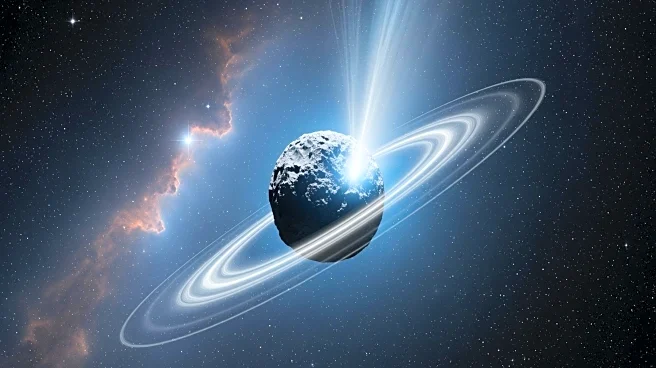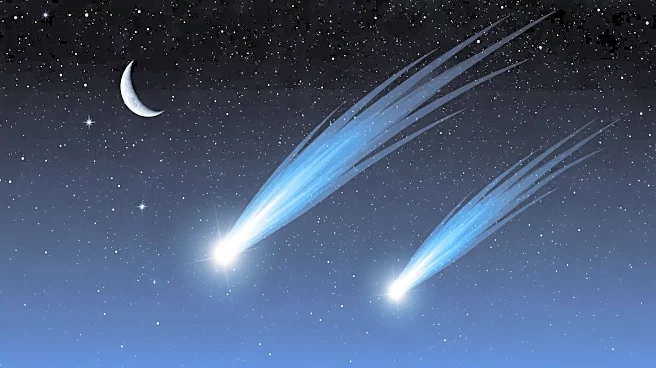What's Happening?
Astronomers have discovered a small companion to the giant star Betelgeuse, nicknamed 'Betelbuddy'. This discovery was made using the Gemini North Telescope in Hawaii, along with NASA’s Chandra X-ray Observatory
and the Hubble Space Telescope. Betelbuddy was observed at its maximum distance from Betelgeuse, allowing for detailed observations. Contrary to expectations, Betelbuddy is not a white dwarf or neutron star but is suspected to be a young stellar object about the size of our sun. This finding challenges existing theories about binary stars, as Betelgeuse is significantly larger than its companion, which is unusual for binary systems.
Why It's Important?
The discovery of Betelbuddy provides new insights into the nature of binary star systems, particularly those with extreme mass ratios. This challenges current understanding and opens up new areas of research in stellar formation and evolution. The findings could lead to a reevaluation of how binary stars form and interact, potentially impacting theories about star life cycles and the dynamics of stellar systems. This discovery also highlights the importance of advanced telescopic technology in uncovering hidden aspects of the universe.
What's Next?
Further studies will be conducted to understand the nature of Betelbuddy and its relationship with Betelgeuse. Researchers will likely focus on the dynamics of this binary system and how it fits into broader stellar models. The scientific community may also explore the implications of this discovery for other known binary systems, potentially leading to new theoretical models. Continued observation and analysis will be crucial in unraveling the mysteries of this unusual stellar pairing.
